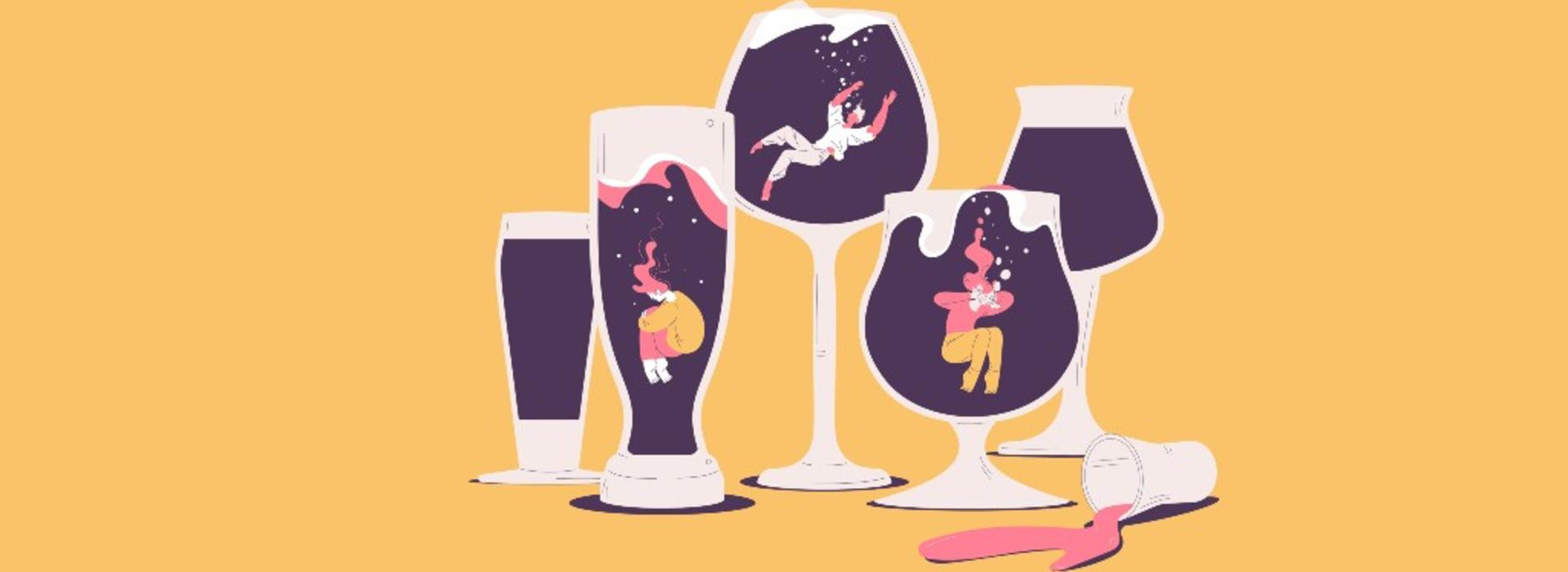
People with anxiety and mood disorders more likely to experience alcohol use disorder symptoms than others who drink at the same level
MINNEAPOLIS/ST. PAUL (05/03/2023) — Published in the peer-reviewed journal Alcohol: Clinical & Experimental Research, University of Minnesota Medical School researchers found people with an anxiety or major depression disorder experience greater alcohol use disorder symptoms and problems in comparison to people without those disorders — even at the same levels of drinking. This finding might help to explain why those who develop an anxiety or mood disorder are at heightened risk of alcohol use disorder (AUD), which is characterized by uncontrolled drinking and preoccupation with alcohol.
“Our findings show that on a drink-for-drink basis, those with anxiety and depression experience more symptoms related to alcohol use disorder. If addiction were a competition, those with anxiety and depression would have a significant head start,” said Matt Kushner, PhD, a professor at the U of M Medical School.
Internalizing disorders — like anxiety disorder or a major depressive disorder — commonly co-occur with AUD. Approximately 20-40% of people with an internalizing disorder have AUD, compared to 5% of the general population. Previous studies have shown people with internalizing disorders become dependent on alcohol more quickly than others, even at similar levels of use.
In this study, the research team analyzed data on 26,000 adults from the National Epidemiological Survey on Alcohol Related Conditions and compared AUD-related symptoms in people with an internalizing disorder and those without, accounting for alcohol intake and other factors.
The study found anxiety disorder and major depressive disorder predicted more alcohol-related symptoms—even when level of drinking is held constant. This is an example of the ‘harm paradox’ effect—or the negative consequences from a given level of substance use within a certain group that exceed those experienced by people outside that group.
Other key findings from this study include:
- The harm paradox effect was evident not only for those whose anxiety and depression disorders were ongoing, but also for those who had these mental conditions in the past only.
- The harm paradox effect was even more pronounced for those with more than one anxiety or depression disorder.
- The harm paradox effect was equally evident in both men and women with an anxiety or depression disorder.
Although this study didn’t directly evaluate neurobiological processes, the findings are consistent with the view that addiction and anxiety/depression disorders share some of the same biological processes in the brain. This may help to explain why having one of these conditions is a risk factor for developing the other in the future.
Future research is needed to confirm the role of neurobiological mechanisms underlying the harm paradox. Additionally, prospective studies - following the same people over a period of years - would allow for a more refined understanding of the harm paradox identified in this study. Finally, the research team says policy makers should consider whether the harm paradox warrants more restrictive recommendations regarding ‘safe’ levels of alcohol use for those with anxiety and depression disorders.
Funding was provided by the National Institute on Alcohol Abuse and Alcoholism (R01AA029077).
###
About the University of Minnesota Medical School
The University of Minnesota Medical School is at the forefront of learning and discovery, transforming medical care and educating the next generation of physicians. Our graduates and faculty produce high-impact biomedical research and advance the practice of medicine. We acknowledge that the U of M Medical School, both the Twin Cities campus and Duluth campus, is located on traditional, ancestral and contemporary lands of the Dakota and the Ojibwe, and scores of other Indigenous people, and we affirm our commitment to tribal communities and their sovereignty as we seek to improve and strengthen our relations with tribal nations. For more information about the U of M Medical School, please visit med.umn.edu.